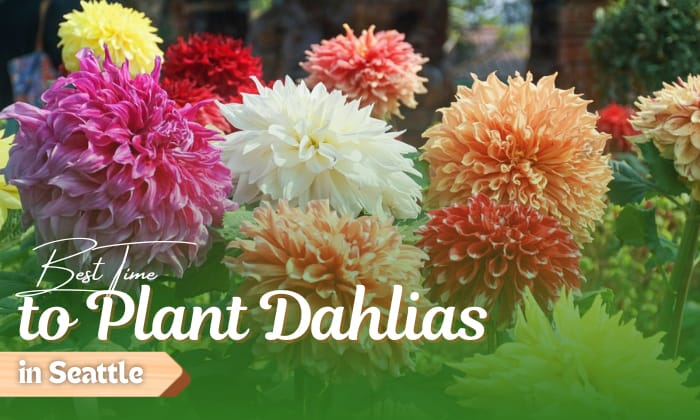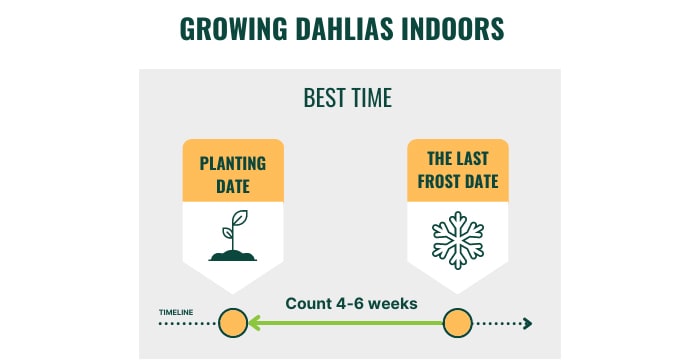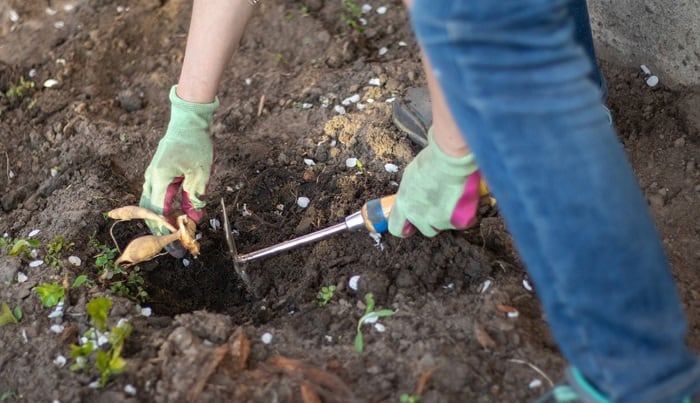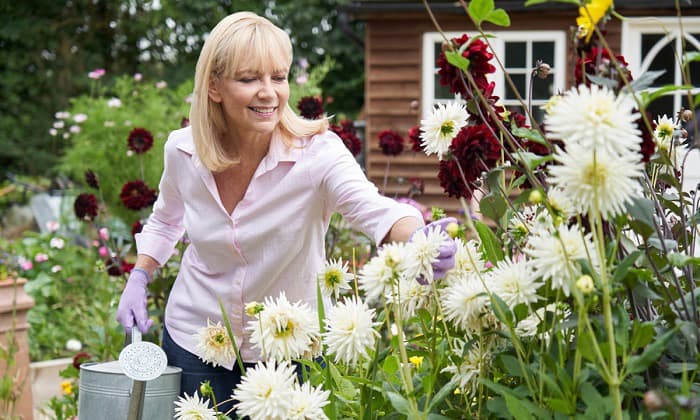As a city in the Pacific Northwest, Seattle has the ideal climate for dahlias due to its high temperatures during the day and cooler weather at night.
If the growing season is approaching and you’re unsure when to plant dahlias in Seattle, remember to sow them around mid-April and mid-May for the best results. Check out our guide below for more details.
Table of Contents
Best Time to Plant Dahlias in Seattle
1. Plant outdoors in spring in April and May
When is it safe to plant dahlias? It’s generally safe to grow them after the last spring frost, which, if we take into account Seattle’s climate, tends to fall within early spring or on March 21.
In practice, however, it’s better to delay dahlia planting time until April and even May if possible, since the ground tends to be drier during these months instead of wet and soggy—something that can lead to root rot.
The warm climate of mid and late spring is also ideal for growing dahlias from tubers, especially once soil temperatures reach 60 to 70℉. So, purchase your dahlias between fall and spring and sow them when the weather warms up in your area.
2. Plant indoors four to six weeks before the last frost
Another way you can plant dahlia tubers is to grow them in pots four to six weeks before the last frost and then transfer them outside after said date. Since Seattle’s final frost is March 21 on average, February 8 would be the earliest dahlia bulbs planting time.
Caring for dahlias in pots is also straightforward. Use well-drained soil and place the eye of the tuber in the center of the container. The pot should receive full sun through a window and one watering at planting time only, at least until sprouts begin growing.
You can move your dahlias outdoors and sow them at a depth of six inches in mid or late spring. In any case, the ideal sowing and transplanting time remain relatively the same throughout the city.
3. Some notes on Seattle’s hardiness zone
Since Seattle is in hardiness zone 8, and dahlias are winter-hardy in zone 8 to 11, these plants will survive winter outdoors in Seattle without being dug up for storage.
You just need to grow dahlias in the spring, cut the stems down to four inches after the first frost, then cover them with mulch so that they can survive winter.
In April and May, dig the bulbs up, separate the clumps or crowns while ensuring they have one eye each, then sow the tubers as usual. This is an easy way to take care of dahlias throughout the cold season and ensure they’re ready for planting once spring comes.
Dahlia Planting Guide in Seattle
When selecting the planting location for dahlias, remember the following:
- Dahlia sun requirements are at least six hours of direct sunshine per day, as they need full sun to produce the most If grown under shade, these plants will become leggy and might not bud at all.
- Before sowing, it is best that you select a south-facing garden plot away from strong winds that can break dahlias, plus prepare well-drained sandy soil with a pH of 6.5 to 7.
Afterward, follow the tips below for planting dahlia tubers in ground:
- First, there’s no need to amend the soil prior to gardening. If anything, a dahlia fertilizer is only recommended 30 days after sowing and once a month when the plant has reached eight inches of height.
In these cases, a low-nitrogen formula like a 5-10-10 or an all-purpose liquid fertilizer should suffice.
- In the meantime, loosen the soil down to twelve inches vertically and dig holes eight to nine inches wide.
- Insert five-foot tall stakes into the ground if your dahlias’ minimum height is three feet. These stakes will secure the plants as they grow if you tie them to the stems with twine.
- As for how deep do you plant dahlias, the general recommendation is four to six inches, with larger varieties requiring more depth.
- You should position the eyes upward and two inches away from the stakes, then cover the tubers with two inches of soil in the holes we made earlier. That’s pretty much it for dahlia planting tips.
- Finally, do not water the ground at planting time, or you’ll encourage rot.
Caring for Dahlias in Seattle
- Irrigation is an essential part of dahlias bulbs care. Water your plants three times per week after sprouts appear and daily when the weather is hot.
- At the same time, protect young plants from slugs using iron phosphate or a product like Sluggo Plus. Sluggo Plus has the benefit of deterring snails and earwigs simultaneously, both of which can pose problems for dahlias.
- Aside from these pests, other nuisances you need to look out for are spider mites and powdery mildew. These can cause dahlia leaves to shrivel and die and are most prevalent when the weather is hot. If you come across them, control spider mites with Neem oil and powdery mildew with sulfur or potassium bicarbonate.
- Additionally, care for dahlias in pots by watering the soil whenever the top two inches are dry. You should use containers that are 16 inches wide and 12 inches deep, or opt for pots measuring 8 inches in width only when growing smaller varieties.
- Regarding fertilization, dahlia care in pots is the same as in-ground planting. Use small amounts of nitrogen only, and feed the plants monthly after they’ve formed shoots.
When Do Dahlias Bloom?
They bloom in the middle of summer until the first frost, or in Seattle or Pacific time, up until November. Dahlia life cycle consists of four stages: germination, vegetative growth, reproductive development, and flowering. All of these can take place within two and a half to six months if you grow dahlias using tubers.
Conclusion
Determining when to plant dahlias in Seattle is uncomplicated. Just plant them under frost-free weather when the soil has reached 60 to 70℉ and is no longer soggy. Follow the dahlia planting depth and fertilizer recommendations above, and remember to protect your tubers during winter.
This way, your flowers will blossom in the summer and survive until next spring, ready to display themselves again.
Read next: Best Time to Plant Tomatoes in Seattle

Hi, I am William – Floridayards’ digital content creator. My job is to find answers to all your concerns with thorough research and our team’s expert advice. I will also bring you honest reviews on the best products and equipment for raising your beautiful garden. Please look forward to our work!















